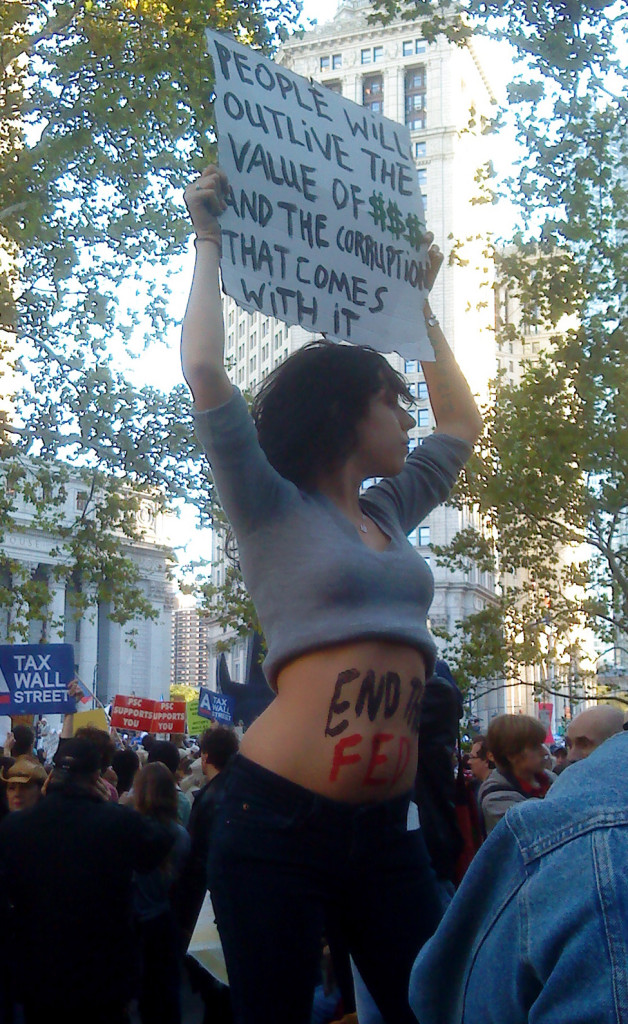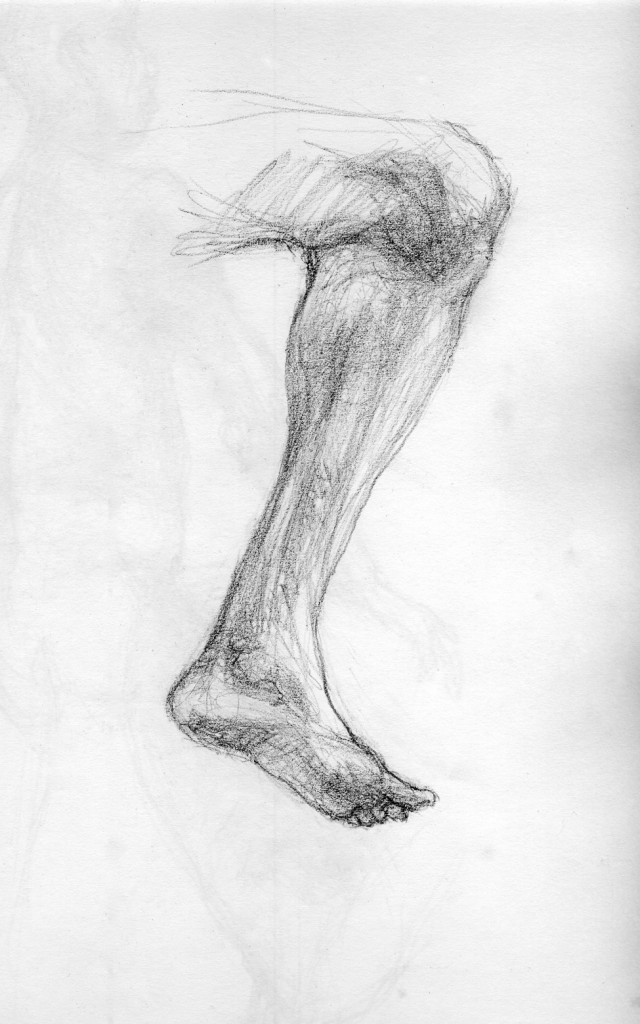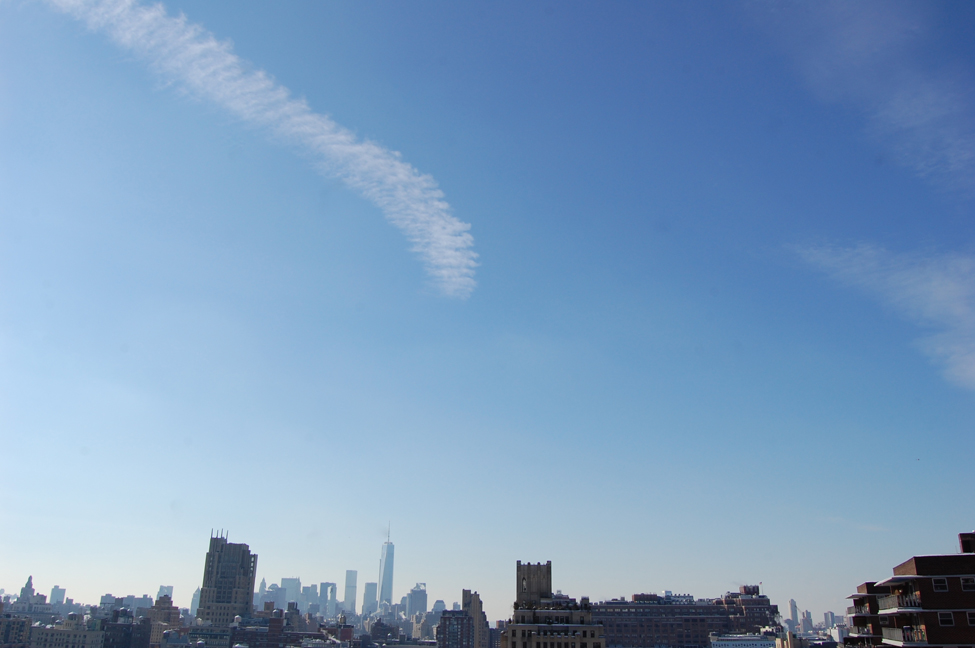XXXI
The song he wrote, “Jump Jim Crow,” made Thomas Dartmuth (T.D.) “Daddy” Rice, one of the most famous and wealthy entertainers of his day. Inspired, it is said, by a crippled slave’s street performance (in St. Louis, Cincinnati or Pittsburgh) in the late 1820’s, Rice, a carpenter turned actor and comedian from New York’s Lower East Side dock district published the song – a boastful tall tale – and sang and danced his way, in blackface and ragged clothes, around the Christian world.
A magnetic stage presence, tall and wiry, Rice often accompanied his musical numbers with stories of George Washington, who he claimed had been a friend of his father’s. But it was the persona of Jim, chanting and dancing, that animated his theatrics.
Come, listen all you gals and boys, Ise just from Tuckyhoe;
I’m goin’ to sing a little song,
My name’s Jim Crow.
Oh, weel about and turn about and do jis so,
Eb’ry time I weel about I jump Jim Crow.
I went down to the river, I didn’t mean to stay;
But dere I see so many gals, I couldn’t get away.
Oh, weel about and turn about…
And arter I been dere awhile, I tought I push my boat;
But I tumbled in de river, and I find myself afloat.
Oh, weel about and turn about…
I git upon a flat boat, I cotch de Uncle Sam;
Den I went to see de place where dey kill’d de Pakenham.
Oh, weel about and turn about…
And den I go to Orleans, an, feel so full of flight;
Dey put me in de calaboose, an, keep me dere all night.
Oh, weel about and turn about…
When I got out I hit a man, his name I now forgot;
But dere was noting left of him ‘cept a little grease spot.
Oh, weel about and turn about…
And oder day I hit a man, de man was mighty fat
I hit so hard I nockt him into an old cockt hat.
Oh, weel about and turn about…
I whipt my weight in wildcats, I eat an alligator;
I drunk de Mississippy up! O! I’m de very creature…
Indeed, the very creature. But a catchy tune is a catchy tune – I recall how hard it was not to hum The Green Berets back in the day. At one point there was a civil war in my head – not unlike Donald Duck being pulled by an angel one way and the devil another – between Sgt. Barry Sadler’s amazing clamp-on-the balls tenor, and Barry McGuire’s furiously growled Eve of Destruction.
But we digress. So viral, as it were, was Jim Crow (the song) in its day that the U.S. Ambassador to Central America, one John Lloyd Stephens, reported that he was greeted on his arrival in Méridan, Yucatán in 1841 by a brass band rendition of “JJC” – his Mexican counterparts having assumed this to be the American national anthem.
Whatever else he may have been, or engendered, “Daddy” Rice was an artist – a species of folk who often live hard and squander their wealth. When he died in 1860, at the age of 52, Rice’s burial – in Brooklyn’s Green-wood cemetery – was paid for by public subscription.
He was survived by no known children – none of the several borne by his wife, Charlotte Bridgitt Gladstone, an English woman, presumably Jewish, lived past infancy.
Jim Crow, of course, is still around in endlessly variant forms. Metamorphoses, mon amour. And it is said that a life-sized wooden statue of Jim Crow, done up in rags and posed in the midst of his dance – purportedly carved by “Daddy” himself, and used to advertise his show in London – led a vagrant life all up and down Broadway, from theater to theater, to actors’ watering hole throughout the waning years of the century. Until, like so many others, he was swallowed by the city.
When you were young, in the 1950s, and your mother came home from work, she would turn on the radio, almost always to WNYC, the municipal AM station. In the afternoon, at the conclusion of a local news broadcast, Around New York, came the most fascinating and strange few moments of airtime imaginable: the Missing Person’s Report.
The narration was spare, but the quality of the announcer’s voice remains vivid in your hearing. A purposefully flat affect, not as sonorous as Murrow’s or Sevareid’s, yet distinctly professional, from which attempts had been made to remove all idiosyncrasy. You don’t remember the names of the missing, but let us call him Jerome Thomas, “negro, aged 32, approximately five foot ten, wearing gray pants and a striped shirt. Last seen at 4 p.m., this past Tuesday, July 11.”
Nor was Mr. Thomas alone. Every day, a few of the city’s eight million people, mostly but by no means all “Caucasian,” and primarily, though not exclusively male, were reported to have vanished off the streets. If one had seen Mr. Thomas or any of the others mentioned, or knew of their whereabouts, one was instructed to call a special number. “The time is two thirty,” the announcer said. “You are listening to WNYC, the voice of New York City, where we now present The Masterwork Hour.”
A building is nothing more nor less than a realized idea.
A building is an idea that has taken material form.
It stands in relation to other ideas and material forms.
Many ideas coming together can generate a building, just as many kinds of material are combined to build it.
The idea of a building is realized because collective human energy and will shape and transform the materials that come out of the ground.
Taken together, human energy and human will equal intention.
There is nothing about a building rising, standing, or being unbuilt that is not about human intention.
A city is an agglomeration of human intentions carried out over time.
It is possible to look at moments in the life of a city, even at a distance of many years and ask:
What ideas formed in this city’s collective mind?
What were its intentions?
How did it carry these intentions into material form?
In 1935, Bertolt Brecht asked “Questions From a Worker Who Reads”:
Who built Thebes of the Seven Gates?
In the books you will read the names of kings.
Did the kings haul up the lumps of rock?
Babylon, many times demolished,
Who raised it up so many times?
In what houses did the builders of gold-glittering Lima live?
Where, the evening that the Great Wall of China was finished, did the masons go?
Great Rome is full of triumphal arches.
Who erected them?
Over whom did the Caesars triumph?
Had Byzantium, much praised in song, only palaces for its inhabitants?
Even in fabled Atlantis, the night that the ocean engulfed it,
Those drowning still cried out for their slaves.
The young Alexander conquered India.
Was he alone?
Caesar defeated the Gauls.
Did he not even have a cook with him?
Philip of Spain wept when his armada went down.
Was he the only one to weep?
Frederick the Second won the Seven Years War.
Who else won it?
Every page a victory.
Who cooked the feast for the victors?
Every ten years a great man.
Who paid the bill?
So many reports.
So many questions.
Further Questions From a Worker Who Reads (pace Bert):
What about appearances is not deception?
Where is the place between being and non-being?
The world is full of less than ideal circumstances and situations. But it is not the job of the world to provide these. The only job the world has is to generate realities.
Trish + Fonny
4-Ever
And what of the awesome, untapped power of orgasmized labor?
…The taxi stopped at a red light, a few meters away from the Cibiles Fountain. The sight of the statue called up a vivid memory. I was fifteen. Ben and I were in the Archive in Brooklyn. My father was showing me pictures of Madrid during the time of the Republic. In one of them, there was a group of militiamen smiling and posing in front of the bags of sand they had placed around Cibiles to protect the goddess from Fascist bombs.
This from Eduardo Lago’s novel, Call Me Brooklyn, trans. Ernesto Mestre-Reed. Champagne, IL: Dalkey Archive Press, 2013; original title: Llamame Brooklyn. Barcelona: Ediciones Destino, 2006.
The vinyl solution to the shellac question. It’s a matter of record.
Then on to digits trapped in polycarbonate and “played” by light. Until they, like all that is solid, melt into air.
“It’s immaterial.” An objection still used by attorneys in trial courts when an assertion made by opposing counsel has, presumably, no direct bearing on the matter at hand.
But of course, more and more is amaterial. And has no direct bearing on matters at hand, or, for that matter, the hand itself.
“One has,” said my friend Wolfgang once, across a table, “ever less to hold in one’s hand.”
And what is the relation of the hand to the digital?
Manos overboard! came the alarm.
Immaterial!
Social meteor.
And a final Tweet: The birds is coming!
And going.
Immortalized as a crêpe!
A wall is nothing more than an attempt, ultimately futile, to block a flow of energy.
How exhausting the oscillation between approval and reprehension.
How many zeroes in Google?
Them others.
Not brothers.
The mothers!
Tryin’ to make it real
But compared to what?
Asked Eugene Booker McDaniels oncet.
When a culture is actively dying, like a restive invalid, it throws of the bedclothes. It struggles not to survive, but to unburden itself of signification.
I only write defective novels.
What a difference bending a “t” makes.
I lost my job and found an Occupation.
I lost my Occupation and fell into the Dao.

XXXII
The material and the amaterial move within one another and together. They give birth to one another. They destroy one another.
Little engines that can, until we don’t.
Around the time you were coming up, the power structure and enforcement mechanisms in this country broadened their definition of nigger to include “white” people like you. They had spasmed toward fascism in the past whenever they’d been seized with bouts of fear, but in the 1960s the scope of their terror officially enlarged to ten centimeters and they were ready to push.
The expanded circle of nigger – now meaning something to whom anything could be done with impunity – never really closed once it prolapsed. In fact, it continued to widen, eventually engulfing not only dissenters and the poor, but the population as a whole. To the point where anyone is surveillable, and, de facto, surveilled. To the point where, however reactionary one’s own politics may be, one knows, deep down that that any time the word can go out and a bunch of men who will not ask why will kick in your door and, if they feel nervous, shoot you down. Or if they have been ordered to shoot you down, they will simply do that.
And they will do that to one another if ordered. To their own families. Or they will push a button and a drone will do it. Which may or may not beat being legally thrown in a hole forever. There is no you, because there is no them. A self is the most frightening concept to them – for a host of reasons.
So as the Movement crested, we saw the field of civil rights open up legislatively even as, at a deeper level, everyone became a nigger and the sexual healing of the midnight hour shifted, inexorably, to the ball-shrinking terror of what Soyinka calls “the midnight knock” – which we know, of course, is a lovely, archaic euphemism drawn from a civility that, while it never truly existed, gestured toward a psychically possible other way, an ever-fraying thread of subjectivity, and the hope of recognition of self in other.
I do not mean to suggest that racism against blacks has been sublimated, still yet that “whites” have turned a fundamental corner in their view either of themselves or of African-Americans – only that its social terrain has shifted. With the erosion of whiteness as a standard, “white” people are scared of their own shadows, in addition to those constructed Others of another hue.
Traditionally “protected” sections of the population may now be subject to extreme repressive measures. The only state of exception is the state itself, which somehow overlaps with Google. The founding American bargain in which “whites” were identified with “right(s)” lapsed and was replaced a truly nightmarish condition of negative equality. No new contract was possible because our long-term social practices had rendered us, finally, incapable of imagining, much less developing a substrate of dignity and respect for anyone, especially ourselves.
Lacking such a substrate, of course, one cannot really conceive of “rights.”
Conversely, were there to exist such a substrate – a binding soil of common sense born out of the irreducible fact of our common brother and sisterhood with all the inhabitants of the earth – who would require legal rights? What we think of as rights would simply rain down, like condensation from the saturated sky. But for the present there is nothing of the sort visible on the radar. It’s the sort of weather the pilots call severe clear.
Someone has to be born in the Dark Ages.
The great Western hallucination of action with only the consciously intended effect.
Yet: Aliud dicere, aliud intellegi velle, said Quintilian. “Saying one thing, while intending something else to be understood.”
In “Between Emotion and Landscape: The World Is Not an Object of Representation,” the seventh chapter in Francois Jullien’s Detour And Access: Strategies of Meaning in China and Greece, he writes of the three modalities of ancient Chinese poetic discourse. “Alongside direct exposition (fu) is the formulation by analogy (bi) and expression by allusive incitement (xing). Of the three, the last, from the beginning and throughout the development of Chinese poetics, aroused the most interest.”
He goes on to note that “Chinese men of letters (especially after the Song) conceived of this poetic incitement as an interaction between “landscape” and “emotion” (jing and qing). They were led to this by their philosophy of immanence, which understands reality in terms of polarity: everything comes into the world based on the play of opposed but correlated energies, yin and yang. A similar relationship governs the two poles of internal emotion and external landscape: “the landscape produces emotion, and “the emotion in turn engenders the landscape”; interiority borrows from the external world to express its most intimate sentiments, just as the world impregnates interiority with its affect. This “incitement” is produced “at the crossroads between consciousness and the unconscious,” specifies the theorist Wang Fuzhi (seventeenth century), and this is why the distinction between what belongs to one pole or another is “nominal.” There is both a borrowing and a detour for the interiority expressing itself, but these operate sponte sua, and the indeterminacy of the exchange creates depth. In other words, there is no subject or object here; nor is their any representation: the outside world serves as the innermost heart’s partner, and the two cooperate in a single process.
Further on: “…The conjunction of the indirect and the immediate… which might seem contradictory, illuminated extremely well the transmutation through which emotion is transformed into meaning and the intensity of our presence in the world is transformed into the poem’s endless unfolding: in this single notion of allusive incitement, two planes are joined – the infra- and the supra-linguistic – between which the poetic process takes place.”
“…Of all the attempts made over the centuries to define the various degrees of poetic motivation, this formulation by the Song commentator Li Zhongmeng has been recognized as one of the most rigorous:
‘To expose the aspects of the external world in such a way as to express our inner dispositions, this is direct enunciation (fu); [on this level] inner feelings and aspects of the world overlap completely.
‘To seek out certain aspects of the external world in such a way as to house our inner disposition in them, such is the analogical mode (bi); [on this level] internal dispositions are compared to aspects of the external world.
‘To enter into contact with the external world in such a way as to arouse inner dispositions, such is the incitatory mode (xing); [on this level] aspects of the external world stir inner dispositions.’”
An earlier theorist, Liu Xie, concludes a chapter on the specific conditions granting “access to incitement,” with a poem, “Envoy,” which distills the capacity of brevity and simplicity to express meaning beyond words:
The linking of the mountains – the undulation of the waves,
The tangling of the trees – the fusion of the clouds:
The eye comes and goes,
The soul opens and receives.
The spring warmth spreads and relaxes,
The autumn wind threatens;
Emotion rises – like a gift:
Incitement is born, in response.
Jullien notes that “the only other Western translation of the poem renders the final notion of incitement as “inspiration” (“And the coming of inspiration as a response”). Indeed, the Western idea of inspiration could well represent an equivalent (in that both notions reveal the source of the poem), but I think it indicates even more the fundamental rift that separates these parallel representations. Inspiration, as it has been described since Democritus and Plato, implies a radical exteriority and describes the poem as welling up from a vertiginous and fascinating elsewhere. With incitement, the poetic process unfolds in a perfect immanence: it is even, one might say, the radicality of this immanence that creates the poem.”
“…Just as Chinese painting does not depict one single landscape, an imaginary or perceived spot in nature, but rater attempts each time to render the landscape par excellence, to capture through its brush stroke the great animation of reality (even when it depicts a simple rock or bamboo stalk), the poet described in Chinese literary treatises is seeing not to represent a given scene or experience visually, but to transcend his individuality, to open himself to the world’s infinite scope. The spirit frees itself from the bog of sensation, breaks away from the partial nature of sight.
“…With the Chinese, there is once again, a great partnership between the ego and the world, an interaction between internal emotion and all external reality…”
In Bowling Green, KY, the earth (kun) opens and eight (ba) classic Corvettes – inmates of the National Corvette Museum – vanish into a sinkhole.
Now, if the ancient theory holds, there are some very happy, unexpectedly surprised new Corvette drivers in Wuhan, China. And the Horsepower Year is still but a foal. Baby you’re just too fast.


